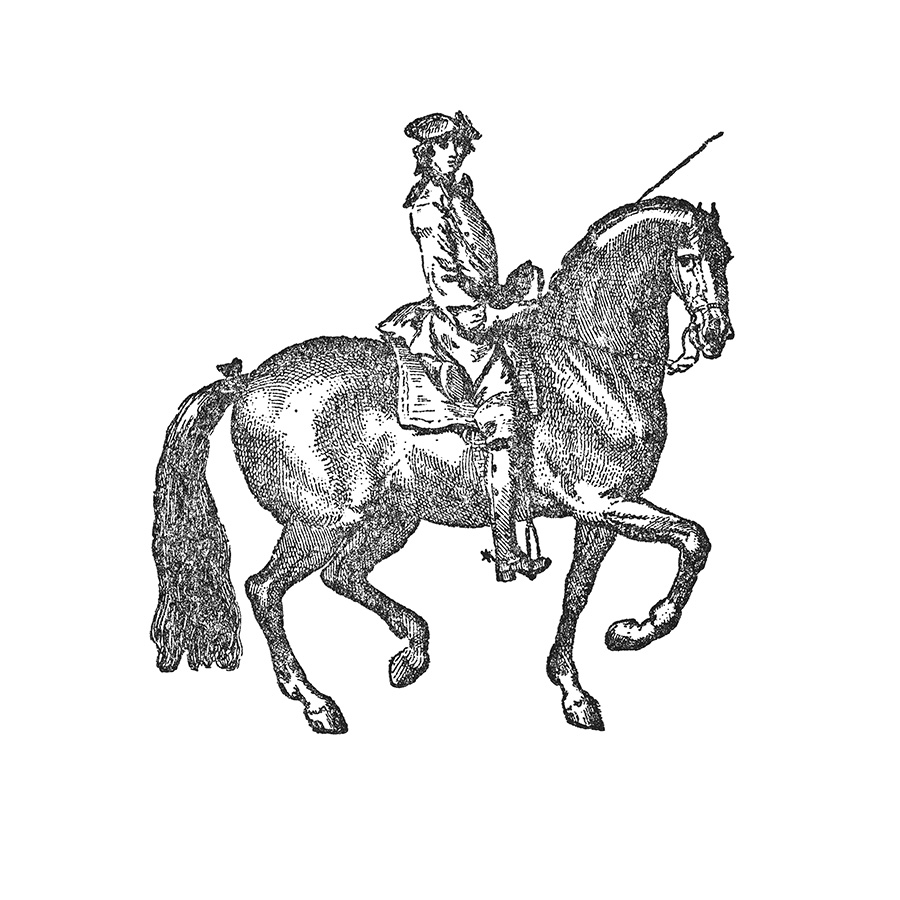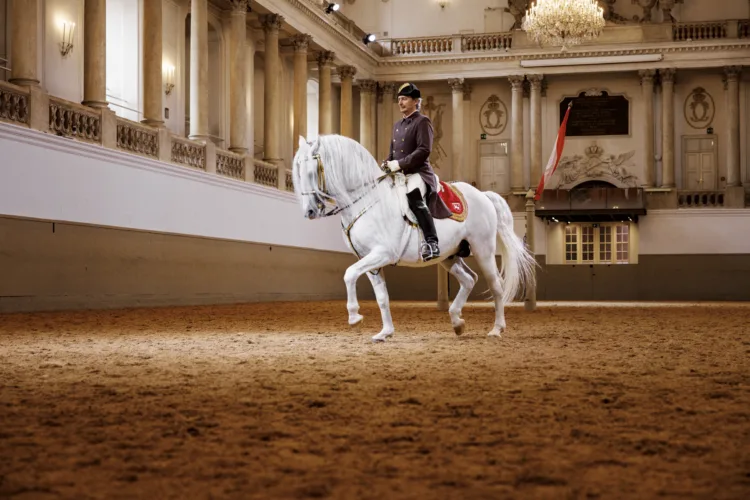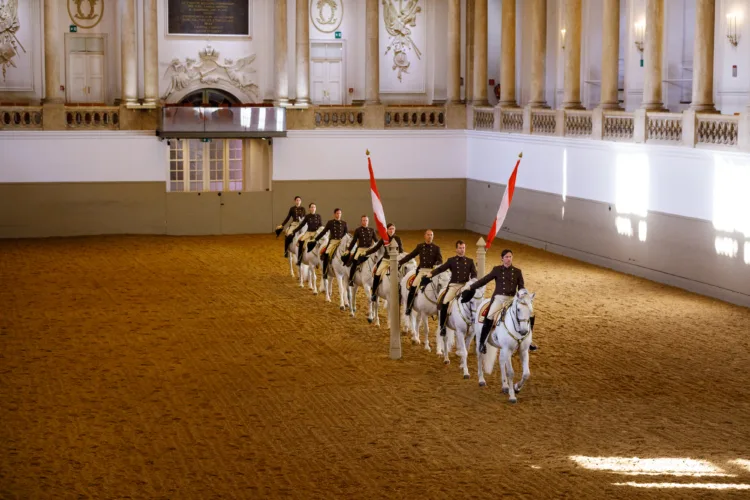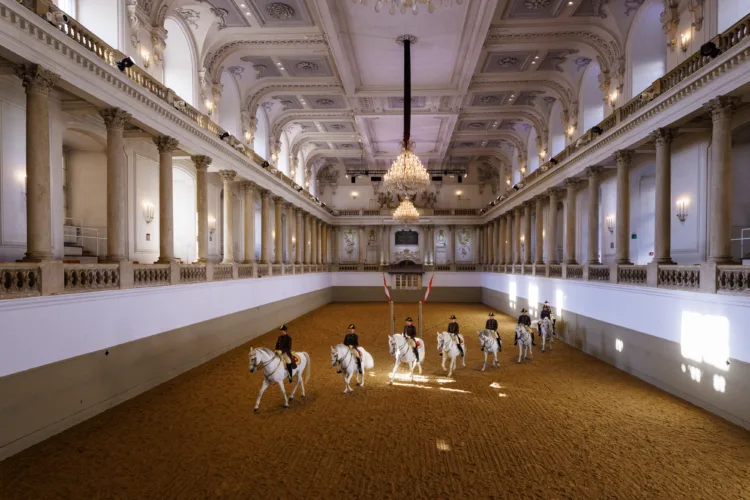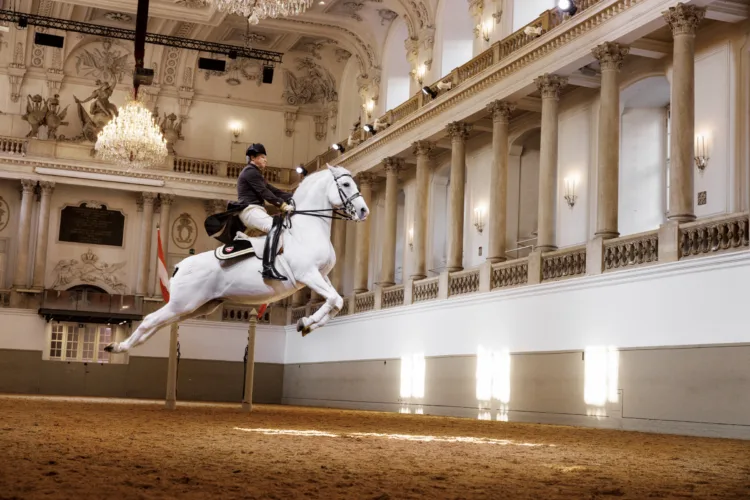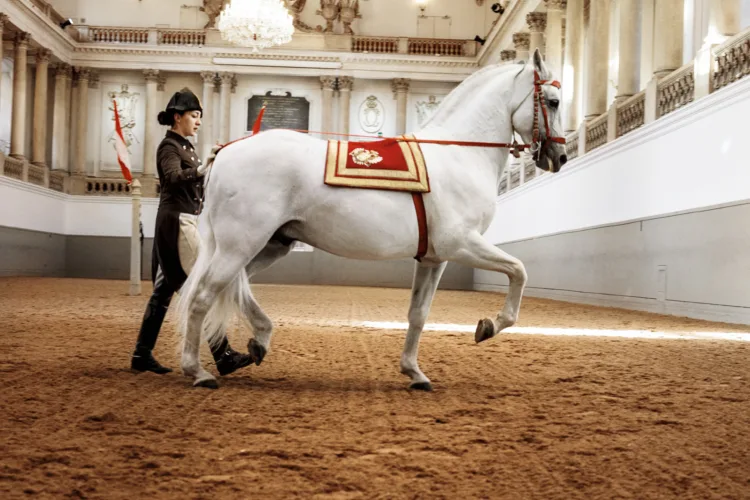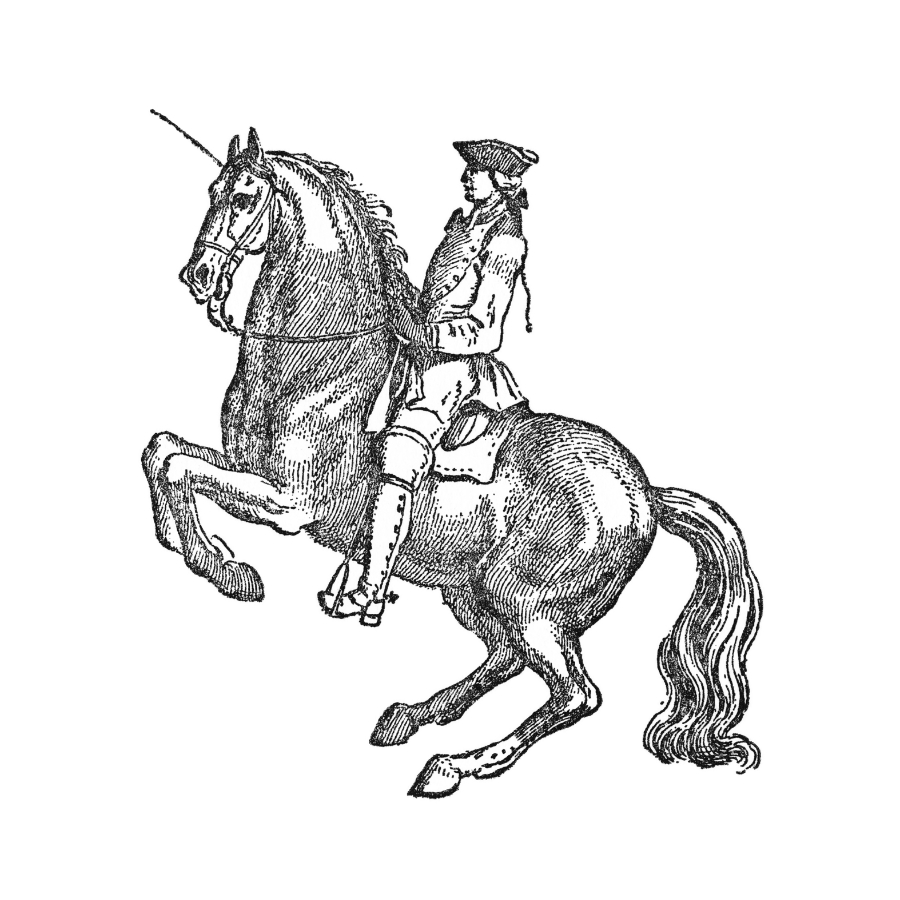
The Spanish Riding School in Vienna is the oldest riding school in the world and the only institution where the High School of Classical Horsemanship in the Renaissance tradition has been practised and maintained unchanged for 460 years – which is why it now forms part of the UNESCO Intangible Cultural Heritage. The aim of classical equestrianism is to study the natural movements of the horse and to cultivate the greatest possible elegance in the High School of Classical Horsemanship through systematic training. The outcome of the training, in which rider and horse are always on an equal footing, is incomparable harmony between rider and stallion.
The name of the Spanish Riding School dates back to the sixteenth century: Ferdinand I, the later Holy Roman Emperor, grew up in Spain and brought the magnificent Spanish horses from the Iberian Peninsula to the court in Vienna. The horses were considered to be exceptionally noble and docile, and were therefore particularly suitable for classical equestrianism. The white Lipizzaner stallions that enchant horse lovers from all over the world with their performances at the Spanish Riding School today are descendants of this proud Spanish horse breed, which had originated from a cross between Spanish, Arabian and Berber horses.
The Stallburg imperial stables, which houses up to 71 of the famous white stallions, is Vienna's oldest and most important Renaissance building. It was constructed in 1565.
The term “court riding school” stems from the fact that attendance and use were formerly reserved for the nobility. It served mainly to train the young nobility in the art of riding. Emperor Charles VI commissioned Johann Bernhard Fischer von Erlach to build the Winter Riding School for this reason. After the death of Fischer von Erlach the Elder it was his son Josef Emanuel Fischer von Erlach who took on the project. The Winter Riding School in the Hofburg Palace in Vienna is recognised as the most beautiful riding hall in the world and was built between 1729 and 1735. The equestrian portrait of the monarch still adorns the magnificent Baroque hall as a sign of gratitude.
Numerous masked balls, carousels, equestrian games and court balls were held in the Winter Riding School during the reign of Empress Maria Theresia. Today, the riders of the Spanish Riding School not only train their stallions here, showcasing a perfect harmony between rider and horse to an international audience, but the Winter Riding School can also be used as an event venue for balls and other events.
